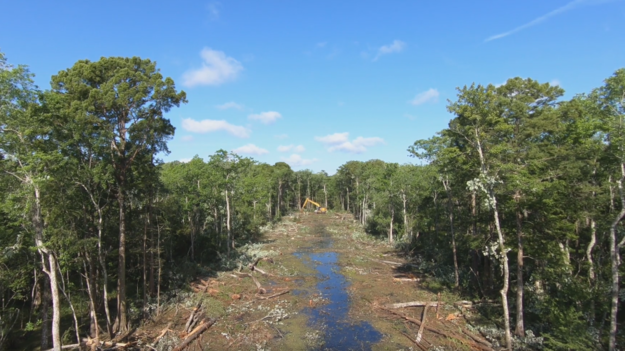On Monday, January 23, 2023, the U.S. Army Corps of Engineers (Corps) confirmed its Record of Decision to use the state’s River Reintroduction into Maurepas Swamp (Maurepas) project as mitigation for construction of the West Shore Lake Pontchartrain (WSLP) levee project.
This decision is noteworthy in that it is a first-of-its-kind opportunity in which a state restoration project is used to offset impacts of a federal protection project.
In the official announcement on its website, the Corps stated that “The executed Record of Decision will adopt the Maurepas Diversion as the swamp mitigation feature of the WSLP project to compensate for unavoidable impacts to swamp habitat. This decision comes after the Final Supplemental Environmental Impact Statement (FSEIS), released in December 2022, determined it will not only restore the ecosystem around the WSLP project but also increase its resiliency. Following the FSEIS, Colonel Cullen Jones, New Orleans District Commander, recommended the Maurepas Diversion as the swamp mitigation feature for the WSLP project.”
Typically, the Corps would use mitigation bank credits or construct restoration projects to offset project impacts. Indeed, this was the original decision when the Corps released its draft Environmental Impact Statement. The federal agency said that the Maurepas diversion was not considered a viable mitigation alternative due to its approximately $200 million price tag, which was essentially more restoration than was needed.
However, due to pushback from the public and the state Coastal Protection and Restoration Authority (CPRA), the Corps decided to reconsider its options for mitigating the environmental impacts of constructing the WSLP levee. CPRA worked with the Corps to consider using only a portion of Maurepas project cost towards the state’s required cost share of the WSLP levee construction – an alternative that was strongly supported by the public.
This decision saves time and money for the overall implementation of both projects. Though the levee project is led by the Corps, Louisiana must pay a cost share. Using the Maurepas project as mitigation reduces the state’s share of the cost of building the levee, which will cost about $1.2 billion to construct.
Constructing both projects in tandem also offers greater flood protection for surrounding communities. Not only that, but the restoration of Maurepas Swamp will benefit the exact habitat that will be impacted by construction of the WSLP levee, keeping mitigation in the same watershed as opposed to using mitigation bank credits, which would not have even been in the same basin much less the same watershed.
The West Shore Lake Pontchartrain levee will extend from the Bonnet Carré Spillway to Garyville, protecting over 60,000 residents in St. Charles, St. John, and St. James Parish. The River Reintroduction into Maurepas Swamp will revitalize about 45,000 acres of cypress-tupelo vegetation by reconnecting the Mississippi River to the swamp, one of the largest and last remaining coastal freshwater swamps in Louisiana.
“When we combine risk reduction systems and restoration projects, vulnerable communities and the ecosystems around them both benefit,” said CPRA Executive Director Bren Haase. “The USACE decision is a win-win solution that will provide 100-year hurricane and storm surge protection to Louisianans while preserving a natural resource that is essential to our way of life in south Louisiana”
“We are excited to see both long-awaited projects moving forward and doing so in a way that is more efficient for both agencies and more effective for the surrounding ecosystem and the communities that they will help protect. We hope to see additional partnerships like this in the future to help make our coast more resilient for generations to come,” said Stacy Ortego, LWF Coastal Policy Manager.
Construction is currently underway on the West Shore Lake Pontchartrain levee and is expected to be completed in 2024. The Maurepas freshwater diversion will begin construction this year and will take approximately three years to complete.


